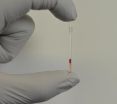(Press-News.org) Bottom Line: Cyberbullying was associated with mental health and substance use problems in adolescents but family dinners may help protect teens from the consequences of cyberbullying and also be beneficial for their mental health.
Author: Frank J. Elgar, Ph.D., of McGill University, Montreal, Canada, and colleagues.
Background: About 1 in 5 adolescents has experienced recent online bullying and cyberbullying, like traditional bullying, can increase the risk of mental health problems in teens as well as the misuse of drugs and alcohol. It is important to understand whether cyberbullying contributes uniquely to mental health and substance use problems independent of its overlap with traditional face-to-face bullying. Family dinners are an outlet of support for adolescents.
How the Study Was Conducted: The authors examined the association between cyberbullying and mental health and substance use problems, as well any moderation of the effects by family contact and communication through family dinners. The study included survey data on 18,834 students (ages 12-18) from 49 schools in a Midwestern state. The authors measured five internalizing problems (anxiety, depression, self-harm, suicide ideation and suicide attempt), two externalizing problems (fighting and vandalism) and four substance use problems (frequent alcohol use, frequent binge drinking, prescription drug misuse and over-the-counter drug misuse).
Results: Nearly 19 percent of the students reported they had experienced cyberbullying during the previous 12 months. Cyberbullying was associated with all 11 of the internalizing, externalizing and substance use problems. Family dinners appeared to moderate the relationship between cyberbullying and the mental health and substance use problems. For example, with four or more family dinners per week there was about a 4-fold difference in the rates of total problems between no cyberbullying victimization and frequent victimization. When there were no dinners the difference was more than 7-fold.
Discussion: "Furthermore, based on these findings, we did not conclude that cyberbullying alone is sufficient to produce poor health outcomes nor that family dinners alone can inoculate adolescents from such exposures. Such an oversimplified interpretation of these associations disregards other exacerbating and protective factors throughout the social environment. Instead, these findings support calls for integrated approaches to protecting victims of cyberbullying that encompass individual coping skills and family and school social supports."
(JAMA Pediatr. Published online September 1, 2014. doi:10.1001/jamapediatrics.2014.1223. Available pre-embargo to the media at http://media.jamanetwork.com.)
Editor's Note: The study was supported by grants from the Social Sciences and Humanities Research Council and Canada Research Chairs Programme. Please see article for additional information, including other authors, author contributions and affiliations, etc.
Editorial: The Role of Families in Preventing, Buffering the Effects of Bullying
In a related editorial, Catherine P. Bradshaw, Ph.D., M.Ed., of the Johns Hopkins Bloomberg School of Public Health, Baltimore, writes: "The article by Elgar and colleagues highlights the importance of cyberbullying in relation to mental health concerns, with particular interest in the role of families. Their focus on cyberbullying is salient because this is an issue that often challenges schools and policy makers given that it can occur in any context and at any time of the day, and it often spills over from one setting to another."
"The permeability of cyberbullying across contexts and the omnipresence of technology, coupled with the challenges parents face monitoring online activities and communication, make it a particularly appropriate focus of this study. In fact, parents may play a greater role in preventing and helping to intervene in cyberbullying situations than educators owing in part to their direct influence over youths' access to electronic devices," Bradshaw continues.
"The often-secret online life of teens may require parents to step up their monitoring efforts to detect this covert form of bullying," she notes.
INFORMATION:
(JAMA Pediatr. Published online September 1, 2014. doi:10.1001/jamapediatrics.2014.1627. Available pre-embargo to the media at http://media.jamanetwork.com.)
Editor's Note: Please see article for additional information, including other authors, author contributions and affiliations, etc.
Media Advisory: To contact author Frank J. Elgar, Ph.D., email frank.elgar@mcgill.ca. To contact editorial author Catherine P. Bradshaw, Ph.D., M.Ed., call Stephanie Desmon at 410-955-7619 or email sdesmon1@jhu.edu
Family dinners good for teens' mental health, could protect from cyberbullying
2014-09-01
ELSE PRESS RELEASES FROM THIS DATE:
Engineers develop new sensor to detect tiny individual nanoparticles
2014-09-01
Nanoparticles, engineered materials about a billionth of a meter in size, are around us every day. Although they are tiny, they can benefit human health, as in some innovative early cancer treatments, but they can also interfere with it through viruses, air pollution, traffic emissions, cosmetics, sunscreen and electronics.
A team of researchers at Washington University in St. Louis, led by Lan Yang, PhD, the Das Family Career Development Associate Professor in Electrical & Systems Engineering, and their collaborators at Tsinghua University in China have developed a new ...
Sierra Nevada freshwater runoff could drop 26 percent by 2100, UC study finds
2014-09-01
Irvine, Calif. — Freshwater runoff from the Sierra Nevada may decrease by as much as one-quarter by 2100 due to climate warming on the high slopes, according to scientists at UC Irvine and UC Merced.
Accelerated plant growth at higher elevations caused by increasing temperatures would trigger more water absorption and evaporation, accounting for the projected runoff declines, the researchers add.
A diminished river flow will only add to the burden of providing resources to the thirsty farms and homes that rely on it. The state is currently experiencing a severe drought, ...
Nature's tiny engineers
2014-09-01
CAMBRIDGE, Mass-- Conventional wisdom has long held that corals — whose calcium-carbonate skeletons form the foundation of coral reefs — are passive organisms that rely entirely on ocean currents to deliver dissolved substances, such as nutrients and oxygen. But now scientists at MIT and the Weizmann Institute of Science (WIS) in Israel have found that they are far from passive, engineering their environment to sweep water into turbulent patterns that greatly enhance their ability to exchange nutrients and dissolved gases with their environment.
"These microenvironmental ...
Location of body fat can increase hypertension risk
2014-09-01
WASHINGTON (Sept. 1, 2014) — People with fat around their abdominal area are at greater risk of developing hypertension when compared to those with similar body mass index but fat concentrations elsewhere on the body, according to a study published today in the Journal of the American College of Cardiology.
Obesity is a known risk factor for hypertension, or high blood pressure, and it is widely reported that the location of fat on a person's body can lead to increased risk of other health issues like heart disease and cancer. However, the relationship between hypertension ...
Ride-sharing could cut cabs' road time by 30 percent
2014-09-01
CAMBRIDGE, Mass-- Cellphone apps that find users car rides in real time are exploding in popularity: The car-service company Uber was recently valued at $18 billion, and even as it faces legal wrangles, a number of companies that provide similar services with licensed taxi cabs have sprung up.
What if the taxi-service app on your cellphone had a button on it that let you indicate that you were willing to share a ride with another passenger? How drastically could cab-sharing reduce traffic, fares, and carbon dioxide emissions?
Authoritatively answering that question ...
Faster, cheaper tests for sickle cell
2014-09-01
Within minutes after birth, every child in the U.S. undergoes a battery of tests designed to diagnose a host of conditions, including sickle cell disease. Thousands of children born in the developing world, however, aren't so lucky, meaning many suffer and die from the disease each year.
A.J. Kumar hopes to put a halt to at least some of those deaths.
A Post-Doctoral Fellow in Chemistry and Chemical Biology working in the lab of George Whitesides, the Woodford L. and Ann A. Flowers University Professor, Kumar and colleagues, including other co-authors, have developed ...
Training your brain to prefer healthy foods
2014-09-01
BOSTON (September 1, 2014, 10:20 AM EDT) — It may be possible to train the brain to prefer healthy low-calorie foods over unhealthy higher-calorie foods, according to new research by scientists at the Jean Mayer USDA Human Nutrition Research Center on Aging (USDA HNRCA) at Tufts University and at Massachusetts General Hospital. Published online today in the journal Nutrition & Diabetes, a brain scan study in adult men and women suggests that it is possible to reverse the addictive power of unhealthy food while also increasing preference for healthy foods.
"We don't start ...
Fruit consumption cuts CVD risk by up to 40 percent
2014-09-01
Barcelona, Spain – Monday 1 September 2014: Daily fruit consumption cuts the risk of cardiovascular disease (CVD) by up to 40%, according to research presented at ESC Congress today by Dr Huaidong Du from Oxford, UK. The findings from the seven year follow-up study of nearly 0.5 million people in the China Kadoorie Biobank found that the more fruit people ate, the more their risk of CVD declined.
Dr Du said: "CVD, including ischaemic heart disease (IHD) and stroke, is the leading cause of death worldwide. Improving diet and lifestyle is critical for CVD risk reduction ...
Permanent AF doubles risk of stroke compared to paroxysmal AF
2014-09-01
Barcelona, Spain – Monday 1 September 2014: Permanent atrial fibrillation (AF) doubles the risk of stroke compared to paroxysmal AF, according to research in more than 6 000 patients presented at ESC Congress today by Dr Thomas Vanassche from Belgium. The findings suggest that a simple clinical assessment of the type of AF can help doctors to better estimate stroke risk.
Ischaemic stroke is the second cause of death in the EU, accounting for over a million deaths and many more disabled patients each year. Annual direct health care costs amount to more than €20 billion. ...
A nucleotide change could initiate fragile X syndrome
2014-09-01
Researchers reveal how the alteration of a single nucleotide—the basic building block of DNA—could initiate fragile X syndrome, the most common inherited form of intellectual disability. The study appears in The Journal of Cell Biology.
Fragile X syndrome is caused by a defect in a gene on the X chromosome called fragile X mental retardation 1 (FMR1). Around 1 in 230 women and 1 in 360 men carry a so-called premutation, in which a series of DNA repeats at one end of the FMR1 gene is slightly longer than normal. These repeats are prone to even further expansion when ...




